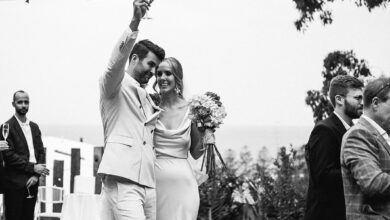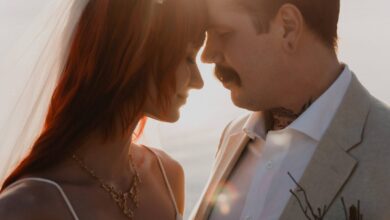Drone Photography in Austin the Vibrant Heart of Texas from the Sky
Austin, the vibrant capital city of Texas, is renowned for its live music scene, lush green parks, and an eclectic blend of modernity and history. As drone technology has become more accessible, it has revolutionized the way we capture and experience this dynamic city. Drone photography offers a unique perspective, enabling us to see Austin’s architectural marvels, natural beauty, and cultural landmarks from the sky. This article delves into the world of drone photography in Austin, exploring its popularity, the best spots for aerial shots, legal considerations, and tips for capturing stunning images.
The Popularity of Drone Photography in Austin
In recent years, drone photography has surged in popularity, transforming the way photographers and hobbyists capture Austin’s landscape. The ability to take aerial shots has opened new creative possibilities, providing angles and viewpoints that were previously unattainable. This technological advancement has been embraced by various sectors, including real estate, tourism, event planning, and environmental monitoring.
Real Estate and Urban Development
Real estate agents and developers in Austin are increasingly using drone photography to showcase properties. Aerial shots provide potential buyers with a comprehensive view of the property and its surroundings, highlighting proximity to amenities, scenic views, and the overall neighborhood layout. This enhanced visual appeal can significantly boost the marketability of properties.
Tourism and Promotion
Austin’s tourism industry has also capitalized on drone photography. Aerial images and videos are used in promotional materials to attract visitors, offering a glimpse of the city’s stunning landscapes and vibrant downtown area. Iconic events like the Austin City Limits Music Festival and South by Southwest (SXSW) are captured from above, showcasing the scale and excitement of these gatherings.
Environmental and Urban Planning
City planners and environmentalists utilize drone photography for urban planning and environmental monitoring. Aerial surveys help in assessing land use, vegetation cover, and the impact of urbanization. This data is crucial for sustainable development and conservation efforts, ensuring that Austin continues to thrive while maintaining its natural beauty.
Best Spots for Drone Photography in Austin
Austin offers a plethora of locations that are perfect for drone photography. Whether you’re capturing the skyline, historic landmarks, or natural landscapes, here are some top spots to consider:
The Texas State Capitol
The Texas State Capitol is a must-visit for any drone photographer. Its distinctive Renaissance Revival architecture and the surrounding grounds make for compelling aerial shots. Capturing the Capitol from different angles can highlight its grandeur against the backdrop of the city skyline.
Lady Bird Lake
Lady Bird Lake, with its serene waters and scenic trails, offers numerous opportunities for stunning drone photography. Early morning or late afternoon shots can capture the reflection of the city in the water, while aerial views of paddleboarders and kayakers add dynamic elements to your photos.
Zilker Park and Barton Springs
Zilker Park, located near downtown Austin, is a sprawling green space that hosts numerous events and festivals. Drone shots can capture the vastness of the park and the adjacent Barton Springs Pool, a natural spring-fed pool that attracts swimmers year-round.
The University of Texas at Austin
The University of Texas at Austin boasts a beautiful campus with historic buildings and lush green spaces. Aerial shots of the iconic Tower, the Main Building, and the Darrell K Royal-Texas Memorial Stadium are especially captivating, showcasing the blend of tradition and modernity.
Congress Avenue Bridge and Bat Colony
The Congress Avenue Bridge is famous for its large colony of Mexican free-tailed bats. During the evening, as the bats emerge, drone photography can capture this unique natural phenomenon along with breathtaking views of the bridge and downtown Austin.
Legal Considerations for Drone Photography in Austin
While drone photography offers exciting possibilities, it’s essential to adhere to legal guidelines and regulations to ensure safety and compliance. Here are key considerations for operating drones in Austin:
FAA Regulations
The Federal Aviation Administration (FAA) governs the use of drones in the United States. Hobbyists and commercial drone pilots must follow FAA regulations, which include:
Registering the Drone: All drones weighing more than 0.55 pounds must be registered with the FAA.
Flying Below 400 Feet: Drones must not exceed an altitude of 400 feet to avoid interfering with manned aircraft.
Line of Sight: Operators must keep their drones within visual line of sight at all times.
No-Fly Zones: Drones are prohibited from flying near airports, military bases, and other restricted areas without special authorization.
Local Ordinances
In addition to FAA regulations, drone operators must comply with local ordinances specific to Austin. For instance, certain parks and public spaces may have restrictions on drone use. It’s advisable to check with the City of Austin’s Parks and Recreation Department or other relevant authorities before flying.
Privacy Concerns
Respecting privacy is crucial when flying drones. Avoid capturing images or videos of individuals without their consent, especially in private settings. Being mindful of privacy helps in maintaining good relations with the community and prevents potential legal issues.
Tips for Capturing Stunning Drone Photographs in Austin
To make the most of drone photography in Austin, consider the following tips for capturing breathtaking images:
Plan Your Shots
Planning is key to successful drone photography. Research your chosen locations and scout for interesting angles and compositions. Use apps like Google Earth or drone-specific apps to get a preview of the area from an aerial perspective.
Time Your Flights
Lighting is crucial in photography, and drone photography is no exception. The golden hours—shortly after sunrise and before sunset—offer soft, warm light that enhances the beauty of your shots. Early morning flights also tend to have less wind, making it easier to capture stable footage.
Optimize Camera Settings
Adjusting your drone’s camera settings can significantly impact the quality of your photos. Shoot in RAW format for greater flexibility in post-processing. Use manual settings to control exposure, ISO, and shutter speed, ensuring optimal results based on the lighting conditions.
Use Filters
Polarizing filters can reduce glare and enhance the colors of your photos, particularly when shooting over water or on sunny days. Neutral density (ND) filters are useful for controlling exposure, especially when shooting video in bright conditions.
Focus on Composition
Composition is fundamental to creating compelling images. Apply the rule of thirds to create balanced and visually appealing shots. Look for leading lines, patterns, and symmetry in the landscape to guide the viewer’s eye through the image.
Practice Safe Flying
Safety should always be a priority. Avoid flying in adverse weather conditions such as strong winds or rain. Be aware of your surroundings and steer clear of obstacles like trees, buildings, and power lines. Regularly check your drone for any technical issues before flights.
Post-Processing
Post-processing can enhance the final look of your drone photographs. Use software like Adobe Lightroom or Photoshop to adjust exposure, contrast, and colors. Subtle edits can bring out the details and make your images stand out.
The Future of Drone Photography in Austin
As technology advances, the future of drone photography in Austin looks promising. Innovations in drone technology, such as improved camera resolutions, longer flight times, and advanced stabilization systems, will continue to push the boundaries of what’s possible. Additionally, the integration of artificial intelligence (AI) and machine learning could offer new creative tools for photographers, such as automated flight paths and real-time object recognition.
Moreover, as the community of drone enthusiasts grows, we can expect more collaborative projects and events that celebrate aerial photography. Drone photography competitions, workshops, and exhibitions will provide platforms for photographers to showcase their work and share their experiences.
Conclusion
Drone photography austin has undeniably transformed the way we capture and experience. From its bustling downtown to its serene natural landscapes, drones offer a unique vantage point that highlights the city’s beauty and diversity. By adhering to legal guidelines and employing creative techniques, photographers can continue to explore new horizons and contribute to the visual storytelling of Austin. Whether you’re a professional photographer or a hobbyist, the sky’s the limit when it comes to capturing the heart of Texas from above.



